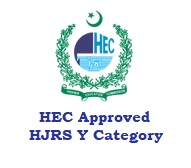Ethio-Eritrea Rapprochement: A Critical Appraisal of Challenges and Prospects
Keywords:
Ethiopia, Eritrea, Rapprochement, peace, security, stability, Horn of AfricaAbstract
The Ethiopia-Eritrea rapprochement has been a long-awaited event that has been met with both excitement and apprehension. As a result, employing a qualitative research approach, this paper provides a critical assessment of the challenges and prospects of the current Ethiopia-Eritrea rapprochement, as well as its implications for the Horn of Africa region's peace and stability. Despite the optimisms, the rapprochement faced enormous hurdles. The challenges of restoring trust between the two countries after decades of enmity and animosity, the persistence of major political issues such as the disputed border, the issue of monetary policy and economic imbalance, war displaced people, and the geopolitics of the Horn of Africa can all be mentioned. Moreover, un-demarcated boundary, the excluded voices of stakeholders during the Pretoria agreement, enmity between the TPLF and the PFDJ, and the divided Red Sea Alliance are among the overwhelming challenges. In terms of prospects, the rapprochement has transformed the horn of Africa's peace and security from reciprocal destabilization and subversion to mutual stability and cooperation. In addition, the rapprochement enhanced regional cooperation and integration in the horn of Africa, it decreased the threat of GERD, and enhanced the IGAD`s credibility as a regional organization.
Downloads
References
Abdu, Humadin. (2021). The Ethio-Eritrean Peace Agreement of 2018: Does the agreement sustain and result in a durable peace?
Africa Business Staff Writer. (April 17, 2023). Highlighting Recent Eritrea-Kenya, https://www.zawya.com/en/economy/africa/highlighting-recent-eritrea-kenya-engagement-m6fgzj67
Al-Monitor. (October 22, 2020). Eritrea shifts course on Egypt-Ethiopia dispute over Nile dam, https://www.al-monitor.com/originals/2020/10/egypt-eritrea-visit-nile-dam-ethiopia-support-negotiations.html#ixzz87hqYouEe
AU. (2019). Constitutive Act of African Union, https://au.int/sites/default/files/pages/34873-file-constitutiveact_en.pdf
Chatib, Basri. (2023). Can economic cooperation and integration promote regional peace and security? University of Indonesia
Daniel, Mekonnen and Paulos, Tesfagiorgis. (2011). The Causes and Consequences of the Eritrean-Ethiopian Border Conflict: The Need for a Holistic Approach Towards Transitional Justice in Roba and Berouk (eds.), Monograph 178
Delhi News (2023) Horn Perspectives: Eritrea`s return to IGAD: A promising Opportunity for Regional Integration Monday 20 February
Dima, Noggo. (2013). The Eritrea-Ethiopia Conflict: Domestic and Regional Ramifications and the Role of the International Community
Eri-Platform. (12 June, 2018). Missing facts in Ethio-Eritrea border debate, http://www.eri-platform.org/
Felix, Bethke. (2022). Prospects for Peace in Tigray an assessment of the peace agreement between the Ethiopian government and the TPLF
Kalewongel, Minale (2008). Ethiopia and Eritrea: The Quest for Peace and Normalizations (Master's thesis, Universitetet i Tromsø), pp. 22-48
Kassahun, Berhanu. (2013). Conflicts in the Horn of Africa and Implications for Regional Security, in Redie Bereketeab (ed), the Horn of Africa: Intra-State and Inter-StateConflicts and Security. Pluto Press and Nordic Africa Institute
Kidist, Mulugeta. (2011). The Ethiopian-Eritrean War of 1998-2000: An analysis of its causes, course, impacts and prospects, pp. 32-47
Lyons, T. (2009). The Ethiopia-Eritrea Conflict and the Search for Peace in the Horn of Africa, Review of African Political Economy 36 (120), pp.167- 180
Medhane, Tadesse (2004). Turning Conflicts to Cooperation: Towards an energy-ledIntegration in the Horn of Africa, Published by Friedrich Ebert Stiftung, Bonn/Addis.
Michael Woldemariam. (2018). No War, No Peace in a Region in Flux: Crisis, Escalation, and Possibility in the Eritrea-Ethiopia Rivalry‘, Journal of Eastern African Studies, 12, p.27
Minister of information Eritrea. (2021). Interview with President Isaias Afwerki on Regional and Domestic issues, 17 February (Excerpts), https://shabait.com/2021/02/26/interview-of-president-isaias-afwerki-17-february-2021-excerpt/
Mohajan, Haradhan. (2018). Qualitative Research Methodology in Social Sciences and Related Subjects. Published in: Journal of Economic Development, Environment and People, Vol. 7, No. 1 (31 March 2018): pp. 19-48.
Mohamed, Kheir. (2022). How Eritrea Could Derail the Ethiopian Peace Deal, FB News, 18, Jun.
Nikola, Zukalová. (2018). The Geopolitics behind the Peace between Ethiopia and Eritrea, Euro-Gulf Information Centre
Omar, Mahmood and Meressa, Dessu, (2018). can improved Ethio-Eritrea relation stabilize the region? The Horn of Africa could see an end to the ongoing cycles of direct and proxy conflicts, institute of security studies, AAU?
Stephen, Rock. (1989). Why Peace Breaks Out: Great Power Rapprochement in Historical Perspective, University of North Carolina Press, p. 5
Tekeste, Negash & Tronvoll, Kjetil. (1997). Brothers at War. Making Sense of the Eritrean-Ethiopian War. Oxford, James Currey; Athens, Ohio University Press, p. 179.
Tesfa News. (July 19, 2018). Improvement in Eritrea-Ethiopia Relations And The Way Forward, https://tesfanews.net/improvement-eritrea-ethiopia-relations-way-forward/
The Reporter. (June 4, 2022) Ethio-Eritrea relations in a spotlight amid fresh conflicts, https://www.thereporterethiopia.com/24039/
The Special Report. (2020). Red Sea Peace Initiatives: Saudi Arabia’s Role in the Eritrea-Ethiopia, www.kfcris.com/pdf/d20bbcf408a7f0d61ee0858c8a6db5fd5ee0744ccd381.pdf
Van, Jackson. (2016). Threat Consensus and Rapprochement Failure: Revisiting the Collapse of US–North Korea Relations, 1994–2002, Daniel K. Inouye Asia-Pacific Center for Security Studies.
Vilmer, Jean-Baptiste. (2021). Peace without freedom in Eritrea: causes and consequences of the Ethio-Eritrean rapprochement, Journal of Eastern African Studies, Vol. 15 (1)
Zach, Vertin. (2019). Toward a Red Sea Forum: The Gulf, the Horn of Africa, & Architecture for a New Regional Order.
Downloads
Published
License
Copyright (c) 2023 the Authors

This work is licensed under a Creative Commons Attribution-NonCommercial 4.0 International License.






